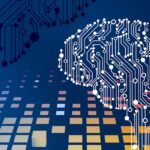The integration of artificial intelligence (AI) into the pharmaceutical industry has revolutionized the landscape of drug discovery and development. Traditionally, this process has been characterized by lengthy timelines, high costs, and a significant rate of failure. However, the advent of AI technologies has introduced new methodologies that enhance efficiency, accuracy, and innovation in identifying and developing new therapeutic agents.
By leveraging vast datasets and sophisticated algorithms, AI can analyze complex biological systems, predict outcomes, and streamline various stages of drug development, from target identification to clinical trials. AI’s ability to process and interpret large volumes of data is particularly beneficial in the context of drug discovery. The pharmaceutical industry generates an immense amount of information from various sources, including genomic data, clinical trial results, and chemical libraries.
AI systems can sift through this data to uncover patterns and insights that would be nearly impossible for human researchers to discern. This capability not only accelerates the discovery process but also increases the likelihood of identifying viable drug candidates that may have been overlooked in traditional research paradigms.
Key Takeaways
- AI is revolutionizing drug discovery and development by streamlining processes and improving efficiency.
- AI plays a crucial role in identifying potential drug targets by analyzing large datasets and predicting biological activity.
- Virtual screening is accelerated through AI by efficiently analyzing molecular structures and predicting binding affinities.
- AI is utilized for predicting drug-drug interactions and side effects, improving safety and efficacy of drugs.
- AI enhances the efficiency of clinical trials by optimizing patient selection, monitoring, and data analysis.
The role of AI in identifying potential drug targets
Identifying potential drug targets is a critical first step in the drug discovery process. AI technologies, particularly machine learning algorithms, have shown remarkable promise in this area by analyzing biological data to pinpoint specific proteins or genes that are implicated in diseases. For instance, researchers have utilized AI to mine genomic databases and identify mutations associated with various cancers.
By correlating these mutations with existing biological pathways, AI can suggest novel targets for therapeutic intervention. Moreover, AI can enhance the understanding of complex disease mechanisms by integrating multi-omics data—genomics, proteomics, metabolomics, and more. This holistic approach allows for a more comprehensive view of disease biology, enabling researchers to identify not just single targets but also potential combinations of targets that could be more effective in treating multifactorial diseases.
For example, in neurodegenerative diseases like Alzheimer’s, AI has been employed to analyze vast datasets from patient samples to identify multiple pathways involved in disease progression, leading to the discovery of new targets for drug development.
Accelerating the process of virtual screening through AI
Virtual screening is a pivotal step in drug discovery that involves evaluating large libraries of compounds to identify those that are most likely to bind to a specific target. Traditional virtual screening methods can be time-consuming and often yield a high number of false positives. However, AI has transformed this process by employing advanced algorithms that can predict binding affinities with greater accuracy.
Machine learning models trained on historical data can learn from previous successes and failures, allowing them to make more informed predictions about which compounds are worth pursuing. One notable example is the use of deep learning techniques in virtual screening. Researchers have developed convolutional neural networks (CNNs) that analyze molecular structures and predict their interactions with target proteins.
These models can process thousands of compounds in a fraction of the time it would take using conventional methods. As a result, AI-driven virtual screening not only accelerates the identification of promising candidates but also reduces the overall cost associated with early-stage drug discovery.
Utilizing AI for predicting drug-drug interactions and side effects
The prediction of drug-drug interactions (DDIs) and potential side effects is a critical aspect of ensuring patient safety and efficacy in pharmacotherapy. Adverse drug reactions are a leading cause of morbidity and mortality, making it essential to identify potential risks early in the development process. AI has emerged as a powerful tool for predicting these interactions by analyzing existing databases of drug interactions and patient records.
Machine learning algorithms can be trained on extensive datasets that include information about known DDIs, chemical structures, and biological pathways. By identifying patterns within this data, AI can predict how new compounds might interact with existing medications. For instance, researchers have successfully used AI models to predict DDIs involving commonly prescribed drugs, enabling clinicians to make more informed prescribing decisions.
Additionally, these models can help identify patient-specific risks based on genetic factors or comorbidities, further enhancing personalized treatment approaches.
Enhancing the efficiency of clinical trials with AI
Clinical trials are often seen as the bottleneck in drug development due to their complexity and high costs. AI has the potential to streamline various aspects of clinical trials, from patient recruitment to data analysis. One significant application is in patient selection; AI algorithms can analyze electronic health records (EHRs) to identify suitable candidates based on specific inclusion and exclusion criteria.
This targeted approach not only speeds up recruitment but also ensures that the selected participants are more likely to respond positively to the treatment being tested. Furthermore, AI can enhance data monitoring during clinical trials by employing predictive analytics to identify trends or anomalies in real-time. This capability allows researchers to make timely adjustments to trial protocols or dosing regimens based on emerging data.
For example, if an AI system detects an unexpected increase in adverse events among participants receiving a particular dosage, researchers can quickly modify the trial parameters to ensure participant safety. By improving efficiency and adaptability, AI has the potential to significantly reduce the time required to bring new drugs to market.
AI’s impact on personalized medicine and precision drug development
The concept of personalized medicine aims to tailor treatments based on individual patient characteristics, including genetic makeup, lifestyle factors, and disease profiles. AI plays a crucial role in advancing this field by enabling more precise predictions about how patients will respond to specific therapies. By analyzing large datasets that encompass genomic information and treatment outcomes, AI algorithms can identify biomarkers that predict treatment efficacy or resistance.
For instance, in oncology, AI has been utilized to analyze genomic sequencing data from tumor samples to identify mutations that may be targeted by specific therapies. This approach allows oncologists to select treatments that are more likely to be effective for individual patients based on their unique tumor profiles. Additionally, AI can assist in developing combination therapies by predicting how different drugs will interact at the molecular level, ultimately leading to more effective treatment regimens for complex diseases.
Overcoming challenges in drug discovery and development with AI
Despite its transformative potential, the integration of AI into drug discovery and development is not without challenges. One significant hurdle is the quality and availability of data. Many existing datasets are fragmented or lack standardization, making it difficult for AI algorithms to generate reliable predictions.
Furthermore, biases present in historical data can lead to skewed results if not properly addressed during model training. Another challenge lies in the interpretability of AI models. While machine learning algorithms can produce highly accurate predictions, understanding the rationale behind these predictions can be complex.
This lack of transparency poses challenges for regulatory approval and clinical adoption, as stakeholders may be hesitant to trust decisions made by “black box” models without clear explanations. Addressing these challenges requires ongoing collaboration between data scientists, biologists, and regulatory bodies to ensure that AI-driven approaches are both effective and trustworthy.
AI’s contribution to repurposing existing drugs for new indications
Drug repurposing—finding new uses for existing medications—has gained traction as a cost-effective strategy for drug development. AI has emerged as a valuable ally in this endeavor by analyzing existing drug databases and clinical trial results to identify potential new indications for approved drugs. By leveraging machine learning algorithms that can recognize patterns across diverse datasets, researchers can uncover novel therapeutic applications for compounds that have already undergone extensive safety testing.
For example, researchers have successfully used AI to identify existing drugs that may be effective against diseases such as COVID-19 by analyzing molecular interactions between known antiviral agents and viral proteins. This approach not only accelerates the identification of potential treatments but also reduces the time and resources required for initial safety assessments since these drugs have already been approved for use in other contexts.
The role of AI in optimizing drug formulation and delivery
The formulation and delivery of drugs are critical factors that influence their efficacy and safety profiles. AI technologies are increasingly being employed to optimize these processes by simulating how different formulations will behave within biological systems. Machine learning models can analyze data related to solubility, stability, and absorption rates to predict how changes in formulation will impact drug performance.
For instance, researchers have utilized AI-driven simulations to design nanoparticles for targeted drug delivery systems. By modeling how these nanoparticles interact with cellular membranes or biological barriers, scientists can optimize their size and surface properties for enhanced delivery efficiency. This level of precision not only improves therapeutic outcomes but also minimizes side effects by ensuring that drugs are delivered directly to their intended targets.
Ethical considerations and regulatory implications of AI in drug development
As AI continues to reshape drug discovery and development processes, ethical considerations and regulatory implications must be carefully addressed. One primary concern is data privacy; the use of patient data for training AI models raises questions about consent and confidentiality. Ensuring that patient information is handled responsibly while still allowing for robust model training is essential for maintaining public trust.
Additionally, regulatory bodies face challenges in establishing guidelines for evaluating AI-driven approaches in drug development. Traditional regulatory frameworks may not adequately address the unique characteristics of AI algorithms, particularly regarding their interpretability and reliability. As such, there is a pressing need for collaboration between industry stakeholders and regulatory agencies to develop standards that ensure safety while fostering innovation.
Future prospects and potential advancements in AI-driven drug discovery and development
Looking ahead, the future prospects for AI-driven drug discovery and development appear promising as advancements continue to unfold across various domains. The integration of real-world evidence—data collected outside traditional clinical trials—into AI models could further enhance predictive capabilities by providing insights into how drugs perform in diverse populations under real-world conditions. Moreover, advancements in natural language processing (NLP) could enable AI systems to extract valuable information from scientific literature at an unprecedented scale.
This capability would allow researchers to stay abreast of emerging findings across multiple disciplines while facilitating knowledge transfer between academia and industry. As computational power continues to grow and algorithms become more sophisticated, we may witness breakthroughs that were previously thought impossible—such as the rapid design of novel compounds tailored for specific patient populations or diseases. The convergence of AI with other technologies like genomics and biotechnology holds immense potential for transforming how we approach drug discovery and development in the coming years.
In summary, while challenges remain in fully realizing the potential of AI within this field, ongoing research and collaboration among stakeholders will undoubtedly pave the way for innovative solutions that enhance patient care and improve health outcomes globally.









